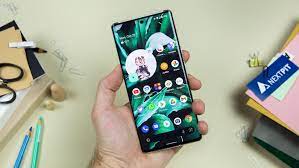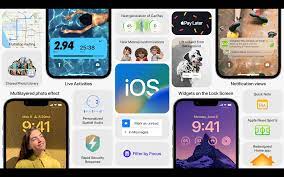The Google Pixel 6 and Pixel 6 Pro are some of the best phones out there. But unfortunately, they suffer from a surprising number of problems. Thankfully, Google has fixed most of the issues with the Google Pixel 6 and Google Pixel 6 Pro with Android OS updates, or at least provided workarounds while finding better solutions.
Here’s a list of potential issues you might run into with your Pixel 6, along with some possible fixes, so let’s take a look!

Google‘s dodgy fingerprint scanner
One of the most common complaints about the Pixel 6 and Pixel 6 Pro is its fingerprint scanner, and there are reportedly multiple ways to stop it from working. Users claim that the scanner can be damaged if you let the battery die or repair the screen, and the fingerprint reader is generally unreliable.
The good news is that most problems with scanners are fixed with updates, and there are some best practices you can follow to avoid problems. If you’re having trouble with the scanner, clean your phone’s screen first and make sure you’re using your right finger and part of it – depending on how you’re doing the calibration, if you’re holding it at an angle. If you use a screen protector, you may also want to make sure it’s not causing any problems, as some protectors can affect the scanner.
The only issue Google hasn’t fixed yet is that repairing the screen could cause the fingerprint scanner to stop working as well. Since even a Google-approved professional can hardly replace the screen without any problems.
Dead point
When it comes to repairing your phone’s screen, if you’ve noticed blocks of black pixels on your screen, this might be the only solution.
It’s not uncommon for phones to have dead pixels, especially if you’re not careful. Unfortunately, if they show up on your Pixel 6, your only solution may be to replace the screen. That said, we recommend checking that your Pixel 6 or Pixel 6 Pro is running the latest version of the Android operating system before sending the phone in for repair; some users have found that simply installing a software update can bring dead pixels back to life.
Other Pixel 6 screen issues
Users have also reported a few other issues with the Pixel 6 series’ screens, with some reporting flickering when the power button is pressed while the phone is off, and others reporting a green tint to the display.
While there’s no word on a fix for the greenish tint, Google has acknowledged the flicker, saying the issue can happen if you don’t press the power button hard enough to turn the phone on. The company released the fix in a January software update, but if you’re still having issues, then to avoid it, just hold down the power button until your Pixel phone turns on.
Auto rotate doesn’t work
Some users complained that the auto-rotate feature stopped working even though it should still be on.
Unfortunately, Google has not yet provided a permanent fix, but we and others have found that the best solution is to restart the phone; doing so seems to fix any issues with the accelerometer, and it should start working fine again.
Auto brightness is too dim or too dark
Some users on Reddit have also reported that their Pixel 6 or Pixel 6 Pro will constantly adjust its screen brightness without changing the ambient lighting.
It looks like this is a result of the auto-brightness algorithm learning how bright you like your phone, so if you manually adjust the brightness when it changes to a level you’re not happy with, it should eventually learn how bright you want it to be.
Charging is not that fast
Despite initially saying that the Google Pixel 6 and Pixel 6 Pro smartphones could restore half their charge in 30 minutes thanks to the 30W charging cable, Google has since confirmed that neither device actually supports 30W charging — instead the base model and The Pro models top out at around 21W and 23W, respectively.
Since the Google Pixel 6 doesn’t come with a charging cable, you’ll have to rely on third-party options; if the one you pick up isn’t as fast as the minimum 21W speed the device is capable of, your charge may take longer than expected.
Wi-Fi call dropped
Some Google Fi customers are finding that Wi-Fi calling doesn’t work on the Pixel 6 series, but a post on Reddit suggests that in many cases, the issue seems to resolve itself over time, so patience may just be the case here.
In the meantime, you might have some luck if you turn airplane mode on and off again. Google also released a software update that included “fixes for an issue that disabled calling functionality on certain devices or networks in some cases,” so that’s probably what it was referring to.
>>>>>>>>>>>>>Google battery









